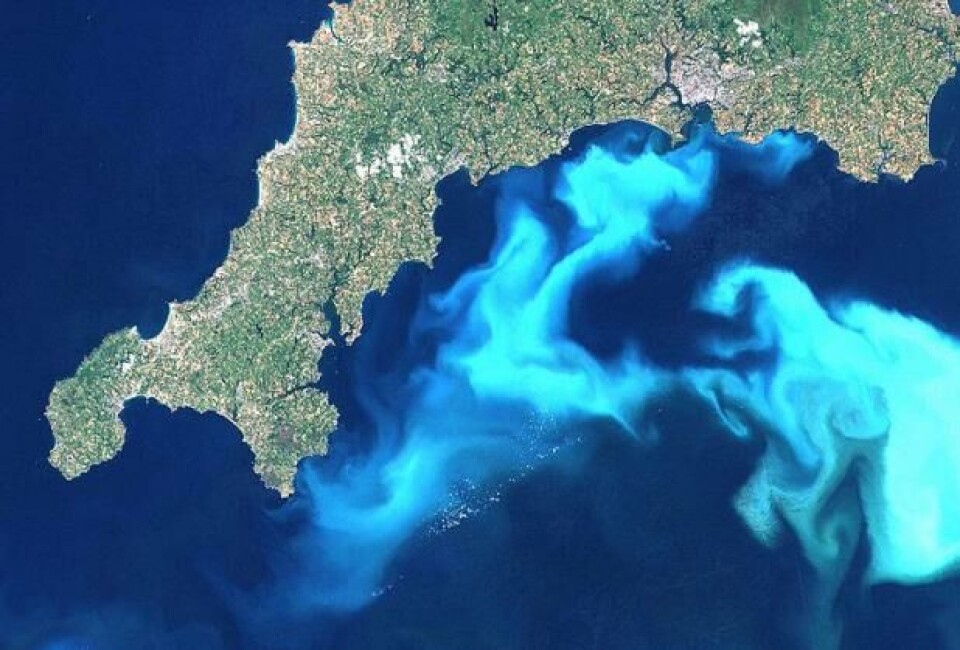
Monitoring environmental change – the diversity and dynamics of marine haptophytes
Denne artikkelen er tre år eller eldre.
From Insight Publishers:
In 1988, an algal bloom appeared along the Danish, Swedish and Norwegian Kattegat and Skagerrak coasts. It was the most toxic and extensive algal bloom ever recorded, causing the death of thousand tonnes of farmed fish as well as many wild marine animals. At the time, nobody had any idea about how or why the bloom was so toxic and so utterly dominant. This caught the imagination of Professor Bente Edvardsen, then a research assistant at the University of Oslo, who decided to make it the focus of her PhD.
It turned out that the bloom was completely dominated by only one species, Prymnesium polylepis, belonging to a group of microalgae known as haptophytes, a phylum of algae of which some may form blooms. Relatively little is known about haptophyte biodiversity and how environmental factors affect their species composition, abundance and distribution. Professor Edvardsen has been studying these organisms ever since the toxic bloom appeared off the Scandinavian coasts almost thirty years ago, and the latest project she is involved in has been using state-of-the-art molecular biology and microbiology techniques to push the boundaries of these investigations.
The project, entitled “Diversity and dynamics of marine haptophytes” (HAPTODIV) aims to explore the diversity of haptophytes as well as the way in which the abundance of different haptophyte species is affected by factors such as temperature, salinity and light. Biological variables have also been explored; the diversity of viruses that infect microalgae is being studied in order to see how they might be influencing haptophyte diversity.
Since the toxic bloom in 1988, researchers at the University of Oslo have been isolating new strains and describing novel species of haptophytes from the coastal waters of Norway, and a team made up of researchers from five institutes – the University of Oslo, the University of Bergen, the Norwegian Institute of Water Research, Uni Research Environment and the Station Biologique de Roscoff – are currently continuing this work. – We have found that there is a large diversity of haptophytes that we were previously unaware of, says Edvardsen. – These waters have been studied by haptophyte experts for decades using microscopy, but our project has found double the amount of species. We have been able to place these species phylogenetically and have shown that many of them represent new species to science.
In relation to seasonal dynamics, the researchers have found that while some species of haptophyte are present all year round, such as many of those that form blooms, others are only seen at certain times at year. In the coastal waters around Norway, there is an influx of freshwater during the spring and summertime when snow melts in the mountains and rivers bring freshwater out into the sea, and with this comes certain groups of haptophytes associated with this lower salinity water. Species composition of haptophytes appears to have no correlation with available nutrients.
– Haptophytes are present all year even when there is little light or low levels of nutrients, says Edvardsen. – This is due to their ability of mixotrophy – they can obtain energy through photosynthesis and through eating bacteria or algae, and can survive with only one as an energy source, unlike most other phytoplankton which need light.
These researchers’ work could provide a platform upon which important monitoring of environmental change might be carried out in the future. – These organisms are sensitive to climate change, and having more detailed information about them now will allow us to carefully and accurately follow the effects of environmental change over the coming years, says Edvardsen. The analysis of Norwegian coastal waters is now moving into the Arctic, where they will continue their pioneering investigations into the diversity and role of these often overlooked organisms in polar ecosystems.
Source: Insight Publishers










